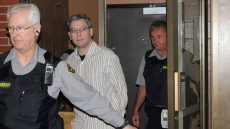There's a place in northern Ontario, buried in a working nickel mine two kilometres underground, where Nobel Prize-winning experiments are the order of the day.
It's called SNOLAB, a cavernous "clean" lab that was able to detect minuscule particles known as neutrinos. The lab is where Queen's University professor Arthur McDonald — the newly minted Nobel Prize winner for physics — and his team of researchers discovered that neutrinos had a mass, changing the very nature of the field of physics.
McDonald, who headed up the neutrino experiment from 1989 to 2007, and his ragtag group of physicists were somehow able to borrow $300 million worth of heavy water — used in Canada's Candu nuclear reactors for 10 years — for just $1 from the Atomic Energy Canada Limited, he said in an interview.
The lab, upgraded after an injection of $65 million, is where scientists are hunting to prove the existence of dark matter, particles that researchers theorize make up 60 to 80 per cent of all matter in the universe.
The refurbished digs are operated by five schools: Queen's University, Carleton University, Laurentian University, the University of Alberta and the University of Montreal along with Vale, a mining company that runs the Creighton mine where the lab is housed.
Nigel Smith, SNOLAB's director, says the new facility, which had its grand opening in 2012, supports about 500 researchers from 70 institutions.
Getting to the lab sounds like something from a Bond film. After descending more than two kilometres in an active mine, researchers then have to trudge 1.5 kilometres to the laboratory because they need to be far away from the Earth's surface to avoid cosmic rays that would mask their test results.
There, researchers "take the onion approach," Smith said, to keep the laboratory clean — even dust and sweat give off small amounts of radiation that can throw off the laboratory's sensitive equipment.
So they take their boots off, go through a door, strip down, shower, go through more doors, throw on clean overalls and walk across "sticky" mats that help trap dust before they can begin hunting for these tiny particles.





